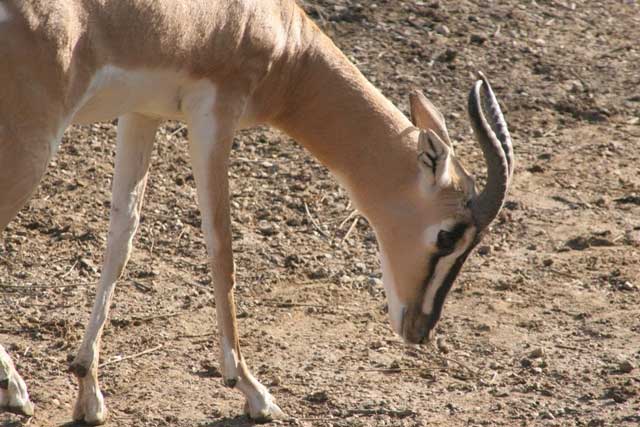Gazella soemmerringii (*) Cladus: Eukaryota Name Gazella soemmerringii (Cretzschmar, 1828) References * Gazella soemmerringii Report on ITIS Vernacular names ------------ Soemmerring's Gazelle (Nanger soemmerringii; formerly Gazella soemmerringii) is a gazelle that lives in eastern Africa. Subspecies * Somali Soemmerring Gazelle Nanger soemmeringii berberana The Soemmerring's Gazelle is a tall gazelle with tan flanks, gradually turning to white on the belly, and long black horns. They are approximately 0.6-0.9 m (2-3 ft.) at the shoulder, and they weigh 35-45 kg (77-99 lb). The diet of the gazelle consists of acacia and bush leaves, grasses, and herbs. They inhabit open steppes with brush and acacia, as well as steppes with few trees, and scientists suggest that male Soemmerring's are temporarily territorial. The life span for this animal is up to 14 years. In many parts of North Africa and the Middle East, large stone corrals were constructed to drive herds of gazelle into, making for an easy ambush. This method of hunting started in prehistoric time and continued into the early part of the twentieth century. One interesting fact is that at some point in history, a Soemmerring's gazelle population became isolated on Kebir Island in the Dahlak archipelago where the gazelle actually developed a dwarf form of the larger mainland races. Most species of gazelle have been hunted for food over the course of history. Soemmerrings are very understudied due to their small numbers. In their former ranges, they are extinct due to over-hunting, trophies, and food. Soemmerring's and Grant's gazelles' outward appearance are so similar that they are often mistaken for each other where their ranges overlap. References * Antelope Specialist Group (1996). Gazella soemmerringii. 2006. IUCN Red List of Threatened Species. IUCN 2006. www.iucnredlist.org. Retrieved on 10 May 2006. Listed as Vulnerable (VU C1 v2.3) Source: Wikispecies, Wikipedia: All text is available under the terms of the GNU Free Documentation License |
|


